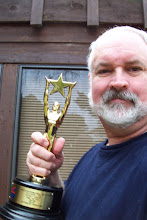 |
| Dr. Leonard Hussey's Banjo is preserved by the London Maritime Museum |
 |
| Dr. Hussey |
Shackleton called Hussey's banjo “vital mental medicine” and told the crew they would need it before their long and grueling journey ended. Later, Shackleton would credit Hussey and his banjo as “a vital factor in chasing away symptoms of depression” in the crew during the long journey and subsequent sea voyage.
 |
| Autographs of the Shackleton crew on Hussey's banjo. |
So next time you go on an expedition or even a vacation, consider leaving behind the extra fancy outfits you'll never wear and the 20 pound bottle of shampoo (the hotels have little bottles of shampoo and they replace them every day). Instead, invest 12 pounds of luggage weight and bring along your banjo. Who knows, it may turn out to be instrumental to your survival!
One final note on the banjo itself. The instrument is called a 5-string banjo, but the headstock looks like a six string classical guitar headstock. A banjo type of the time called a banjo-zither had this type of headstock and Hussey's banjo may have been something like the modern six-string banjo made popular by LeAnn Rimes, Keith Urban and Robert Plant. It can be played like a guitar, but has the sound and durability of a banjo. If anyone has more information drop me a note. The banjo itself as displayed in the museum only has 4 strings as you can see, but there seems to be the faint shadow of a fifth string on the head. The banjo-zither was a sturdy wooden backed design with six tuning pegs. It generally was strung with only five strings, but could accommodate a sixth. Can't tell for sure if this one has a wooden back. The company in Britain that is making a Shackleton tribute banjo that's an open back traditional 5-string. One commenter on the site did say the Hussey banjo was a banjo-zither.
Whatever it was, apparently the "glory-beaming banjo" as Twain called it, saved the day for Shackleton and his boys. Pretty cool, little piece of history.
© 2013 by Tom King










No comments:
Post a Comment